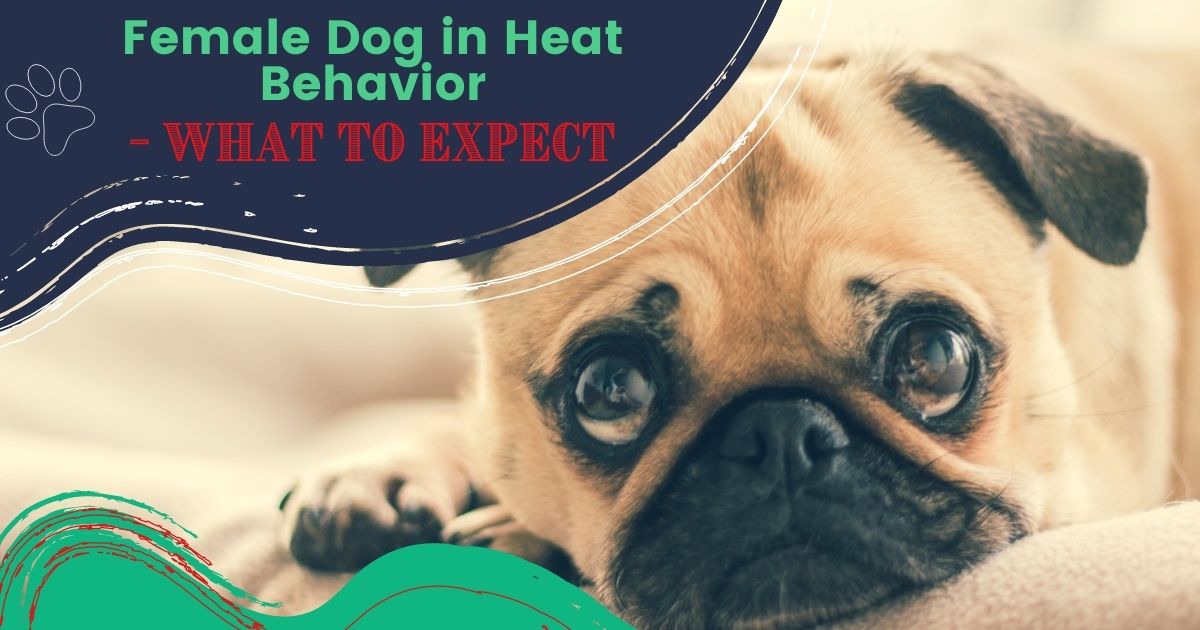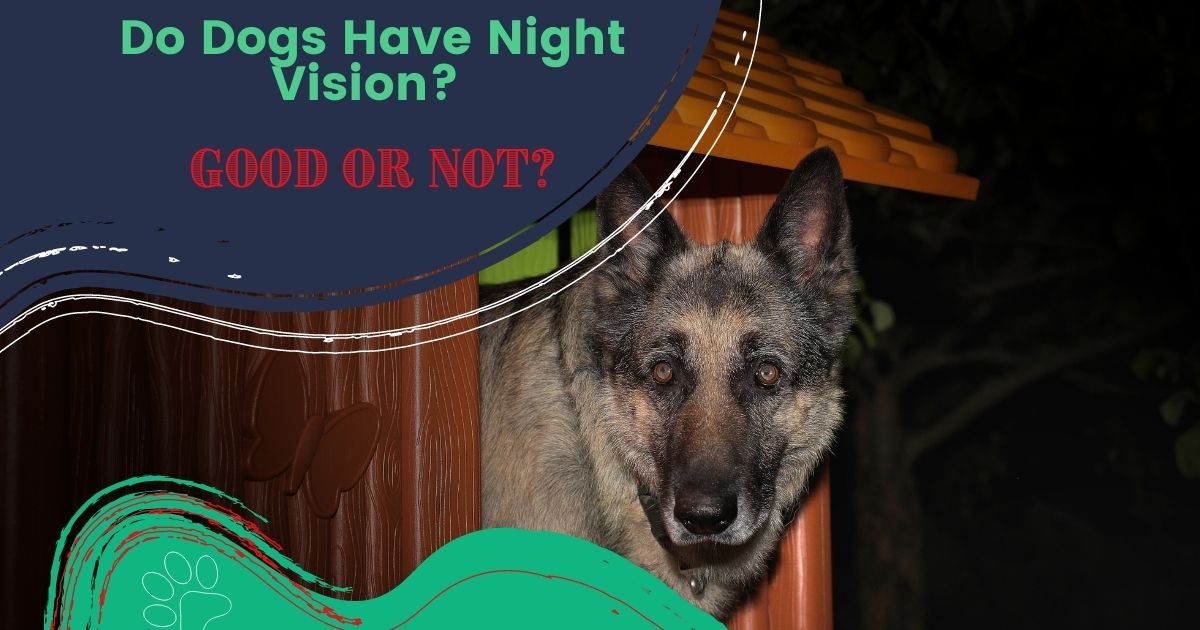[ad_1]
How Long Does a Dog Stay in Heat?
Female dog in heat behavior dictates that once reaching their sexual maturity, female dogs experience a heat cycle (also known as an estrous cycle) that lasts between three to four weeks.
Dogs in heat go through temporary behavioral and physiological changes during this period. You need to be familiar with these changes and know which signs to look out for.

How Often Do Dogs Go Into Heat?
Dogs typically go into heat twice a year. Smaller-sized dogs can go into heat more frequently than larger dog breeds. Also, younger and older female dogs are prone to having irregular heat cycles.
Do Female Dogs Have Periods?
Female dogs have periods once they become sexually mature. They have bloody vaginal discharge when they are in heat.
The menstrual cycle is a period where the uterine lining is shed and discharged together with an unfertilized ovum and blood out the vagina. Contrary, the estrous cycle (heat cycle) is when the female dogs become sexually receptive to males for mating.
The Typical length of the menstrual cycle is between 28 to 29 days, whereas the estrous cycle lasts for approximately 21 days.
The Dog Heat Cycle Explained
The dog heat cycle (the estrous cycle) is divided into 4 stages, namely, the proestrus, estrus, diestrus, and anestrus stages.
Proestrus
The proestrus stage (lasts for about 9 days) and is the first stage of the heat cycle. It is also when the female dog’s body starts to get itself ready to mate.
The dog’s level of estrogen (reproductive hormone) will increase drastically, while its ovarian follicles will develop significantly during this period. Both behavioral and physiological changes will start to appear in this stage.
Behavioral Signs
- Excessive licking of the genital area.
- May increase affection for or clinginess towards owner.
- Might attract male dogs.
- Aggression towards male dogs.
- Tail-tucking.
- Appetite may increase or decrease
Physiological signs
- Swollen vulva.
- Red/pinkish vaginal discharge.
- A peak in the level of estrogen.
- Development of ovarian follicles.
Estrus
The estrus stage is when female dogs become fertile and receptive to males. Mating occurs in this stage. The female dog’s level of estrogen begins to decrease and its level of progesterone increases. This stage lasts for 3 to 14 days with an average of 9 days.
Behavioral Signs
- Frequent urination.
- Friendlier behavior towards male dogs (e.g. showing their rear side to the males with their tail to the side).
- Aggressive behavior towards other females.
Physiological Signs
- Less vaginal discharge.
- Lighter color of discharge.
- Less swollen vulva.
- Softening of the vulva.
- Decrease in estrogen.
- Increase in progesterone.
Diestrus
This stage comes after the estrus stage. During this period, the female dogs are no longer receptive and their bodies will either return to their normal state or the process of returning to their basal state or develop into a pregnancy.
Their estrogen levels stay low, but their progesterone peaks, 3 to 4 weeks after starting the diestrus stage, and gradually decreases at the end of the stage. The diestrus stage can last between 60 and 90 days if the dog is not pregnant.
A pregnant dog will remain in the diestrus stage until the birth of her puppies (the gestation period is approximately 60 days).
Behavioral Signs
No longer interested in flirting (cease of inviting behaviors).
Physiological Signs
- Vaginal discharge disappears.
- The vulva returns to normal size (gradual reduction of the vulval swelling).
Anestrus
The anestrus stage is the inactive stage of the heat cycle. The female dogs have no signs of hormone-induced behavior or physiological change during this stage. This stage lasts until the next estrous cycle.
Female Dog in Heat Behavior
Female dogs in heat will normally display hormone-induced behaviors, such as:
- Normalized interactions with other female dogs.
- Become more affectionate/clingy towards owners.
- Frequent urination.
- Pay more attention to male dogs (Aggressive/agitated towards them during the proestrus stage of the cycle, then more flirtatious during the estrus stage).
- Flirtatious towards male dogs (will display their rear end and have their tail positioned to the side).
- Become aroused.
- Become restless.
- Increased panting.
- Change in appetite.
- May become lethargic.
- Increased self-grooming.
Some dogs might experience a “silent heat” where they show little or no behavioral or physical changes during their heat cycle.

Dog in Heat Symptoms
Physiological symptoms that are unique to dogs in heat include vaginal discharge (bloody or straw-colored mucus), vulval swelling, and changes in their hormone levels (i.e. estrogen and progesterone).
When Should I Expect my Dog’s First Heat?
The age of sexual maturity (when dogs begin experiencing the estrous cycle) varies between breeds.
Smaller breeds may experience their first heat cycle from four months old, whereas the larger breeds or giant breeds will start when they are as old as two years. The average age for dogs to experience their first cycle is between 6 and 15 months.
What Should I Do When My Dog Is in Heat?
Here are some suggestions of ways owners can keep their female dogs comfortable and safe during their heat cycle:
- Set up a nice, comfortable environment (ideally inside the house).
- Provide enrichment to minimize anxiety and stress.
- Keep sanitary items handy.
- Keep male dogs in the household away from her (if you don’t want them to breed).
- Supervise the dog when she is outdoors.
- Ensure that your yard is fenced and escape-proof.
- Ensure the dog is kept on her leash when she is outside.
- Keep the dog’s ID tags and microchip information up-to-date.
- Inform your veterinarian if you notice signs of illness.
When To Spay a Female Dog
Female dogs can be desexed from as young as four months old, however, it depends on the breed. The hormones they lose when you remove their sexual organs are important for their growth when they are puppies. Desexing dogs too young will interrupt their body and hormonal development.
The larger dog breeds take a longer time to reach full body development so, ask your veterinarian when the appropriate time to desex your dog is. Your female dog’s desexing surgery can be scheduled for when she is in the anestrus stage of her estrous cycle.
The Challenges of Owning an Intact Bitch
Intact female dogs make more difficult pets than spayed dogs, especially during their estrous cycle. The challenges intact bitch owners might face are:
- Many dog-boarding facilities or pet-sitting services only accommodate desexed dogs.
- Dog-boarding facilities or pet-sitting services that accept intact dogs may charge higher prices.
- Most dog-day-cares require adult dogs to be desexed.
- Prone to risky, negative, or undesired interactions and injuries when on heat at parks where other dogs are present.
- Increased risks of undesired interactions amongst dogs in a multi-dogs household.
- Restless behavior during the night.
- An intact dog might escape or go missing.
- Bloody drippings and stains.
- More boisterous behaviors.
Male Dog Behavior When Female Is in Heat
- Appetite change (eats less).
- Restlessness.
- Tracking behavior (Seeking behavior).
- Escape or go missing in search of females.
- Aggressive towards other intact male dogs.
- Mating.
These behaviors are limited to intact male dogs, as the castrated male dogs are less likely to get affected by the presence of female dogs in heat.

Caring for an Intact Dog in Heat
- Sanitation (heat pants).
- Enrichment.
- Avoid dangerous situations; dogs in heat can be very unpredictable and even run away from home.
- Keep the bitch comfortable and minimize chances of anxiety.
- Keep track of your dog by means of canine GPS tracking devices.
Do Female Dogs Get Menopause?
Female dogs stay fertile until the end of their life, unlike female primates such as humans and apes. If your intact female dog misses her estrous cycle, it is abnormal, and a veterinary assessment must be scheduled to investigate its possible causes.

Alianna graduated Massey University with a Bachelor of Veterinary Technology degree in 2015. She moved to Australia in 2016 to pursue her passion in reptiles and exotic animals and has been working as a veterinary technician/nurse in an exotic animal veterinary clinic. Since moving to Australia, she has gained several qualifications including advanced veterinary nursing of reptiles and amphibians, advanced veterinary nursing of Small mammals, and venomous snake handling. She is a big advocate of continual education and learning, and has presented at conferences including VNCA conference, AZVT (American Zoological Veterinary Technician) Conference, and UPAV (Unusual Pets and Avian Veterinarian) conference. Veterinary medicine and welfare of aquatic, herpatological, invertebral, and Australian fauna species are her special interests.
[ad_2]
Source link



